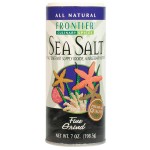"In the animal model used, magnesium deficiency is created when an inflammatory condition is produced."
From Magnesium and the Inflammatory Response: Potential PhysiopathologicalImplications." Archives of Biochemistry & Biophysics 458, no. 1 (February 1, 2007): 48–56.
So simply getting sunshine (as long as it feels good) on as much of your body as possible or doing tolerable exercise that you have the energy for can help stop a magnesium deficiency. (both things can have huge inflammation lowering properties)
I feel that insulin resistance and lymph stagnation are two huge inflammation sources in society in general.
Adding magnesium may be necessary, especially for those that have used supplemental vitamin D, but it can also be quite imbalancing to other minerals.
My experience is consistent with the above.
If you can find a way to directly address the inflammation then the magnesium deficiency will right itself via an okay diet. It does mean reducing refined sugar, though (if insulin resistance is an issue) as it'll just increase your magnesium need.
I'm just curious, what has your experience been with magnesium supplementation displacing other minerals? Did you get low in other things?
I know that magnesium can displace potassium so it's important to supplement.
Thanks for the info on mag and inflammation. I think mag and natural vitamin D are the two most important misidng factors in modern society. Synthetic D wrecks my body (mostly through immune suppression) but the sunlight makes me into a normal human being again.



